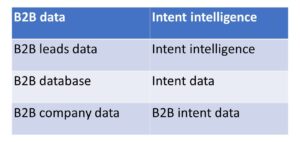This article was originally published in the Elevate Your Marketing newsletter and has been repurposed and republished here with the author’s permission. Here is the link to the original article.
A content strategy is not built for the short term. It has to work today, a few weeks later, a few months down the line, and possibly years later too. Of course, you need to tweak and twist it as you go. But you need to play the ‘infinite game’ to be successful with your content marketing efforts in the long run.
And content clustering and repurposing, according to me, are the ways to build a scalable B2B content strategy. You probably knew this. However, I am sure that not a lot of you have a structured methodology for doing this. Hence, in this article, we look at the following:
- What are content clustering and repurposing? How can they help in building a scalable content engine?
- How to build a structure and system for both?
- A few ready-to-use templates and frameworks for executing this strategy.
So, let’s roll.
What is content clustering?
Content clustering is nothing but the exercise of grouping different content topics so as to make your content creation efforts focused and coherent.
Content clusters – which are often referred to as content pillars – are groups of anchor or core topics around which you create multiple pieces of content.
Let me explain this using an example of a company that sells B2B data (like ZoomInfo). Please look at this excel sheet where I have given a few blog topic ideas and the content cluster or pillar category each of them belongs to.
In this sheet, I have listed down 10 blog topics and titles that belong to 3 content clusters – data quality, account based marketing, and marketing & sales funnel. Identifying content clusters or pillars like this helps in multiple ways such as:
- Managing your content creation better by acting as a guideline while creating a new piece of content.
- Making your content across channels and periods coherent. If you are talking about say 3 core topics in your blog, you can focus on the same in your social media channels. Similarly, if you are talking about them today, you can be consistent about it over a period to make sure that you remain on top of the mind of your customers whenever they think of these topics.
- Organizing your content items better – either in a blog (by adding relevant tags) or in your internal content management system (like Onedrive).
What is content repurposing?
This is 2023. And there aren’t many in the B2B marketing space who don’t understand what content repurposing is. But for those who are less familiar with the term, this is what it means;
Content repurposing is the process of reshaping your content from one content type to another or from one channel to the other.
While it can take different forms, it focuses on reusing your existing content to create new pieces of content without having to start from scratch every single time. Converting a blog post into a social media post (or vice versa) is an example of this.
For instance, look at this social media post I published 10 months ago on a 3-step video marketing strategy. A few months later, I repurposed the same content as one of my newsletter editions. You can view that here.
So, you clearly see how content repurposing is done.
How do content clustering and repurposing help with scalability?
Before we look at how content clustering and content repurposing help with scalability, we need to first understand what scalability means when it comes to content.
Scalability could mean different things depending on the stage of maturity of your content engine. It could mean any or all of the following:
- The ability to scale up the speed and frequency of content creation compared to what you are doing today.
- The ability to reshape or repurpose your existing content to other distribution channels that you were previously not using actively.
- The ability to scale your content creation without increasing budget or other resources.
Whatever meaning it takes, content clustering and repurposing can help you with any type or form of scaling. Here is how:
Let us start with content clustering
Clustering your content gives you a highly relevant group of topic areas always at your disposal. This way, every time you want to create a new piece of content, you will have a never-ending flow of ideas.
For instance, let us go back to the same example of the company that sells B2B data. I have listed 10 topics here.
Now, when I want to create an 11th blog post, I have 3 categories that I have already identified (data quality, account based marketing, and marketing & sales funnel) around which I can create topic ideas.
As an example, here is a new topic idea for the content pillar/cluster ‘account based marketing’:
Using an integrated ABM tool – the path to building a scalable ABM engine
Related: What is account based marketing and what is an ABM platform?
Next, let us come to content repurposing.
Repurposing too helps in giving you a pool of content ideas you can always go to. In addition, it gives you a direction as to what other channels and content types you can leverage than the most frequent ones you use.
Applying a framework to building a scalable B2B content strategy
Now that we understand the basics of clustering and repurposing, let us attempt to make the process structured by using a few frameworks and templates.
Creating a system for content clustering
A common misconception is that content clustering applies to only blogs or a form of indexed content (like service pages or whitepaper landing pages). But you can extend it to any other content type (indexed and non-indexed, gated and ungated) such as a whitepaper, ebooks, how-to guides, videos, podcasts, and so on.
There are also a couple of other pointers you need to understand here:
- If you have been in business for a while, you already know some of the most relevant topics discussed in your industry. You need to leverage that, especially if you are in the early stages of your content creation journey.
- Identifying SEO-relevant topics gives you a sense of what people are talking about online in your niche. This can be leveraged to come up with content ideas even for gated assets.
Bearing this in mind, here is the step-by-step process you can follow to identify and create content clusters in your space:
- List down the 2-3 core products or services you offer (if you have only 1, write that down).
- Write down the 2-3 key terms that you think are related to your niche or offerings.
- Do your content research using a wide variety of techniques and tools like google autosuggestions, answerthepublic.com, Google Trends, google keyword planner, online communities, SEMRush (or any other keyword tool of your choice), etc.
- Next, from the set of keywords and terms you have obtained, filter out the ones that are not relevant to your business.
- Prioritize the keywords in terms of volume and keyword difficulty/competition.
- From this list, identify phrases that can be used as content pillars or clusters
Note: I understand that we are not creating a framework for blog posts alone. But as I mentioned before, going after SEO-relevant terms first is a good way to start. What you can do as the next step is to include topics that are relevant to your niche (that you identified during your research process) even though they don’t have a high keyword volume.
Let us learn this approach using an example.
Consider the same company that sells B2B leads data. If I take ZoomInfo as an example for a product, here is what step 1 would look like:
I would first list down some of the key modules offered by ZoomInfo. Let us take them as ‘B2B data’ and ‘intent intelligence’.
Now for step 2, let me attempt to list down some key terms related to these two modules:

Key B2B data-related terms
I will now use this as the base to do my content research – which is step 3.
There is no particular order in which you need to perform this step. The more tools you have access to, the better. At the same time, don’t overcomplicate the process. What I would recommend is to use the following tools for the first stage of the research:
- Answerthepublic.com
- Quora and Reddit
- Online communities on Slack or Discord (unlike tools, you need to be consuming content on a community regularly to be able to know what the users are talking about)
- SparkToro – SparkToro gives you a list of websites, YouTube channels, podcasts, etc., that discuss topics related to your niche. Once you have the list, go to those individual websites or podcasts to see what kind of content they are publishing.
Once you have a decent list after this phase, head over to a keyword tool like Google Keyword Planner or Ahrefs to identify keywords that have medium to high volume with low to medium difficulty (make sure to keep the keyword list separate from the list of the key terms).
For better understanding, here is the screenshot of the data I obtained from Answerthepublic.com for the B2B data company while searching using the term ‘B2B leads data’.

Content research on answerthepublic
Note: This is only a section of the results. You get more data from the tool.
Similarly, I would go to the other platforms I mentioned above to complete the first phase of the research.
The next phase of step 3 would involve going to a keyword tool for keyword research. Have a look at the below screenshot that shows the results from Google keyword planner for the same term ‘B2B leads data’:

Keyword research using Google Keyword Planner
Next, let us move to step 4.
Here, the idea is to remove any terms or phrases that are not relevant to your business. This is where you also remove any redundant terms.
For example, when I look at Google autosuggestions while searching using the term ‘B2B data’, I see ‘B2B data model’ as a suggestion (please see the screenshot below). That’s something I wouldn’t want on my list of core keywords.

Google auto suggestions
The 5th step is to be done in combination with step 4, wherein you create a separate list of relevant keywords that have high enough volume but have less competition or difficulty (I am not getting into the details of keyword research here).
This is similar to the second phase of step 3, but here you go one level further and make sure you select only the best pool of keywords.
In step 6, you separate out the key terms you can use as content pillars for your blog and other content types and channels.
Here is a simple template you can use to neatly represent this information after step 6.
A framework for content repurposing
Content repurposing is a common topic of discussion among B2B marketers. And some know how to make the best use of it. However, as I mentioned in the beginning, not many have a structured way of going about it. Let’s change it starting today with the method I propose in this section.
First things first. Before we look at the framework, I wanted to share some of the core principles I follow when it comes to content repurposing:
- Always go from long form to short form or short form to short form (going from short form to long form is not something that is impossible, but is not recommended. This is because expanding an existing piece of content might be time consuming. The best content repurposing frameworks are efficient).
- Always look for ways to add sections in your new pieces of content where you can embed content you have already created (for instance, if you have a video related to the topic you are writing about in a blog post, make sure to have a section where you can embed it).
- Try to follow content clusters so that your messaging and content are coherent across multiple channels.
With these basic principles in mind, let us look at the content repurposing framework I have been following for years now.
We will look at the details. But first, here is the link to the framework.
Let us first understand the different columns in the excel sheet. The first column has the core content piece that you would want to repurpose. Column B denotes the content type you want the core content piece to be repurposed into.
Column C denoted by ‘Default publishing channel’ refers to the default channel or platform where you would host the core content piece. And column D represents the new channels you can host, promote, or distribute the repurposed content on.
Note: Content repurposing is not just about repurposing content into other types of content. You also need to look at it through the lens of what other channels can you promote them on.
What I have mentioned in the excel sheet need not be an exhaustive list of all content types. For example, I have not mentioned emails or LinkedIn DMs at all. The idea was to set the foundation for your content repurposing efforts. Your approach in general should go like this:
- List down all the content types you have today and could potentially create (of course with the limited resources you have).
- Identify all the content types they can be repurposed into.
- Identify all the channels and platforms you can repurpose the content for,
It’s that simple. As I always mention, the frameworks and templates I share need to be modified in a way that they fit your business. My objective is to help you get started.
That’s all in this article. If you are looking for help to grow your B2B business with content marketing, please write to us at info@skalegrow.com. You can check out our services page here.
About the author

Naseef KPO is the Founder and CEO of Skalegrow. He comes with rich experience across multiple areas of B2B marketing including content marketing, demand generation, SEO, account-based marketing, marketing analytics, revenue attribution, marketing technology, etc. He writes thought-provoking and relevant articles on The Skalegrow Blog and his weekly LinkedIn newsletter Elevate Your Marketing.
Prior to starting Skalegrow, Naseef led large marketing teams in multi-million dollar B2B organizations where he made significant contributions to the topline growth of the business. He has also appeared on numerous podcasts where he shared his thoughts on trending marketing topics such as the application of AI in marketing, startup marketing, ABM, and B2B content marketing, just to name a few. Being the founder of Skalegrow, he is currently focusing on helping its clients stay ahead of their competition by using innovative yet practical marketing tactics.
You can connect with Naseef KPO on LinkedIn.


